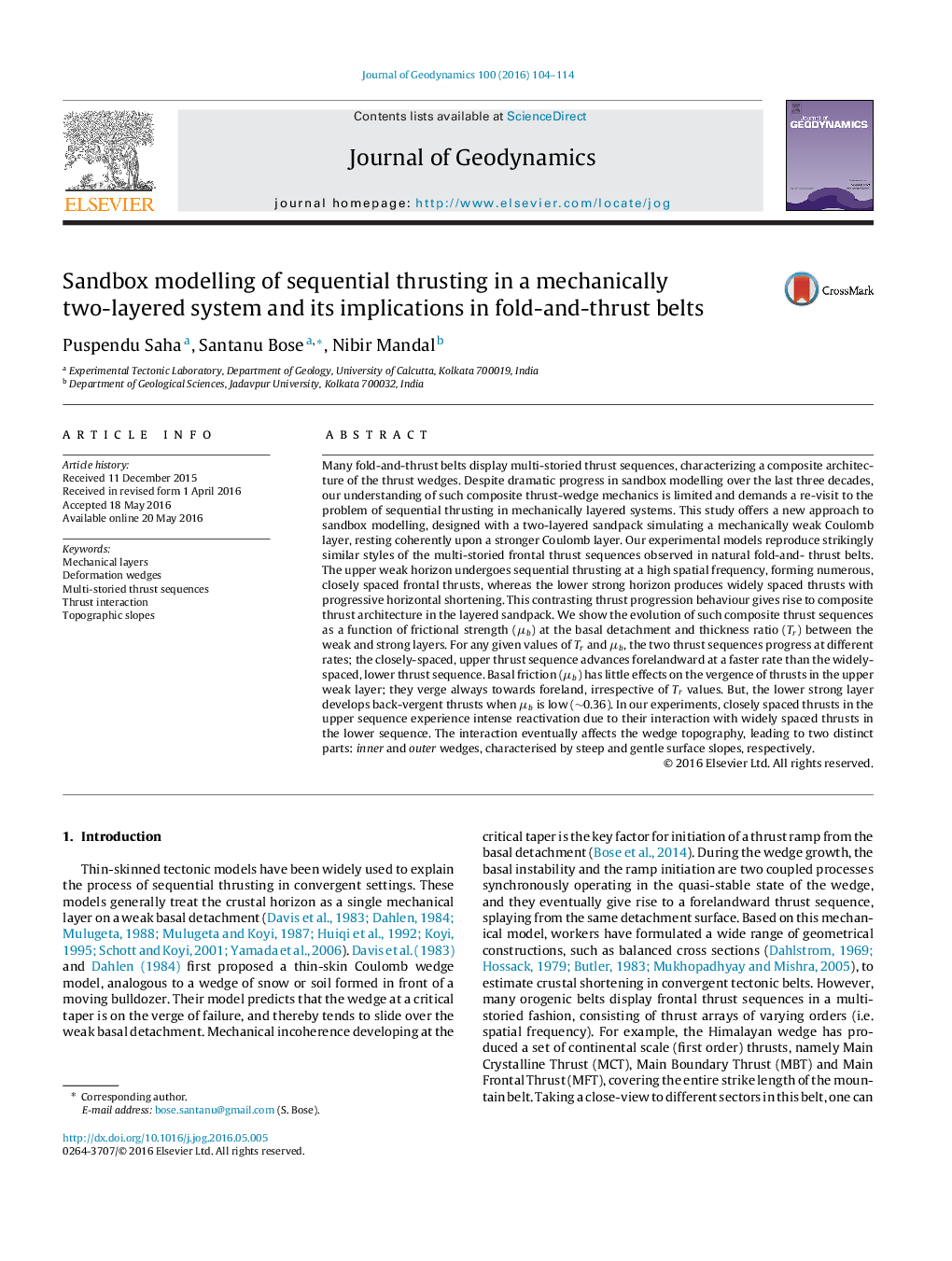| کد مقاله | کد نشریه | سال انتشار | مقاله انگلیسی | نسخه تمام متن |
|---|---|---|---|---|
| 6433070 | 1635750 | 2016 | 11 صفحه PDF | دانلود رایگان |
- Mechanical stratification causes sequential thrusting in multiple orders.
- Contrasting thrust progression in the weak (upper) and strong (lower) layers.
- Frontal thrusting at higher and lower spatial frequency in weak and strong layers.
- Lower-order thrusts reactivate higher-order thrust in the upper weak layer.
- Mechanically layered systems develop segmented topography of the wedge.
Many fold-and-thrust belts display multi-storied thrust sequences, characterizing a composite architecture of the thrust wedges. Despite dramatic progress in sandbox modelling over the last three decades, our understanding of such composite thrust-wedge mechanics is limited and demands a re-visit to the problem of sequential thrusting in mechanically layered systems. This study offers a new approach to sandbox modelling, designed with a two-layered sandpack simulating a mechanically weak Coulomb layer, resting coherently upon a stronger Coulomb layer. Our experimental models reproduce strikingly similar styles of the multi-storied frontal thrust sequences observed in natural fold-and- thrust belts. The upper weak horizon undergoes sequential thrusting at a high spatial frequency, forming numerous, closely spaced frontal thrusts, whereas the lower strong horizon produces widely spaced thrusts with progressive horizontal shortening. This contrasting thrust progression behaviour gives rise to composite thrust architecture in the layered sandpack. We show the evolution of such composite thrust sequences as a function of frictional strength (μb) at the basal detachment and thickness ratio (Tr) between the weak and strong layers. For any given values of Tr and μb, the two thrust sequences progress at different rates; the closely-spaced, upper thrust sequence advances forelandward at a faster rate than the widely-spaced, lower thrust sequence. Basal friction (μb) has little effects on the vergence of thrusts in the upper weak layer; they verge always towards foreland, irrespective of Tr values. But, the lower strong layer develops back-vergent thrusts when μb is low (â¼0.36). In our experiments, closely spaced thrusts in the upper sequence experience intense reactivation due to their interaction with widely spaced thrusts in the lower sequence. The interaction eventually affects the wedge topography, leading to two distinct parts: inner and outer wedges, characterised by steep and gentle surface slopes, respectively.
Journal: Journal of Geodynamics - Volume 100, October 2016, Pages 104-114
